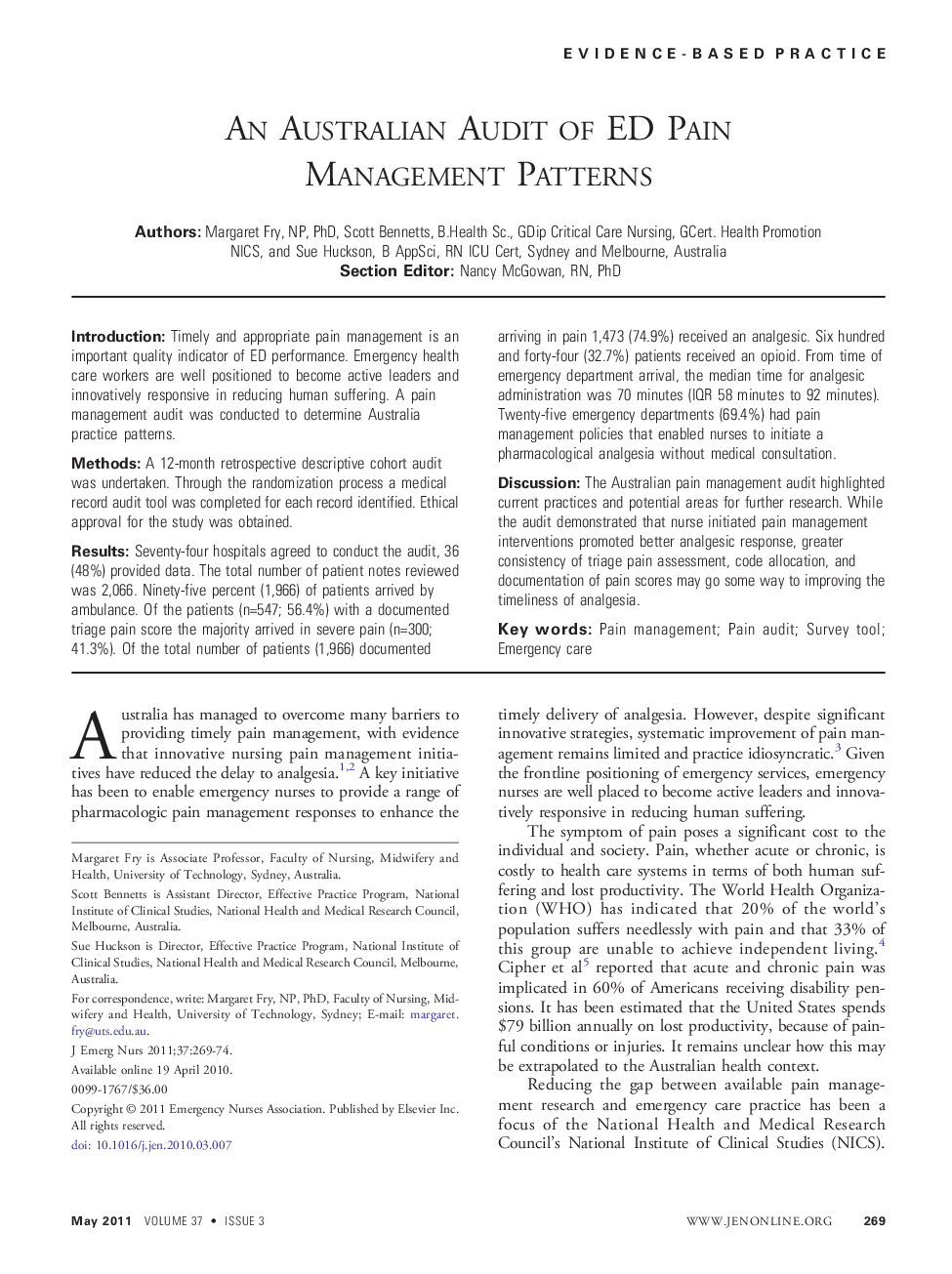| Article ID | Journal | Published Year | Pages | File Type |
|---|---|---|---|---|
| 2608795 | Journal of Emergency Nursing | 2011 | 6 Pages |
IntroductionTimely and appropriate pain management is an important quality indicator of ED performance. Emergency health care workers are well positioned to become active leaders and innovatively responsive in reducing human suffering. A pain management audit was conducted to determine Australia practice patterns.MethodsA 12-month retrospective descriptive cohort audit was undertaken. Through the randomization process a medical record audit tool was completed for each record identified. Ethical approval for the study was obtained.ResultsSeventy-four hospitals agreed to conduct the audit, 36 (48%) provided data. The total number of patient notes reviewed was 2,066. Ninety-five percent (1,966) of patients arrived by ambulance. Of the patients (n=547; 56.4%) with a documented triage pain score the majority arrived in severe pain (n=300; 41.3%). Of the total number of patients (1,966) documented arriving in pain 1,473 (74.9%) received an analgesic. Six hundred and forty-four (32.7%) patients received an opioid. From time of emergency department arrival, the median time for analgesic administration was 70 minutes (IQR 58 minutes to 92 minutes). Twenty-five emergency departments (69.4%) had pain management policies that enabled nurses to initiate a pharmacological analgesia without medical consultation.DiscussionThe Australian pain management audit highlighted current practices and potential areas for further research. While the audit demonstrated that nurse initiated pain management interventions promoted better analgesic response, greater consistency of triage pain assessment, code allocation, and documentation of pain scores may go some way to improving the timeliness of analgesia.
